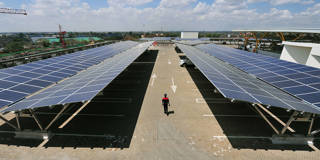The lasting effects of inflation, war, and pandemic policies in 2022 will continue to shape market conditions and generate volatility in 2023 and beyond. For those seeking stable investment returns, health care, education, energy, and China will be the biggest opportunities to watch.
LONDON – Three macro forces will continue to drive volatility in policymaking and financial markets, dominating investors and multinationals’ thinking in the months ahead. They will be watching inflation – and, concomitantly, interest rates; the war in Ukraine and its impact on global energy and food prices; and China’s faltering growth trajectory, notwithstanding the government’s phase-out of its zero-COVID policy. Together, these risks have fueled fears about persistent low growth and possibly even a global recession.
The global outlook is further threatened by headwinds that were undermining the global economy even before the 2020 pandemic. These include the world’s growing population, which has now surpassed eight billion; technological disruption and the prospect of a jobless underclass; and rising inequality, not just in income but also in access to quality education, health care, and employment. Climate change, resource scarcities, and the increasingly urgent energy transition all imply that greater disruptions are imminent, at a time when a growing debt overhang is threatening state-funded social programs around the world.
These are complex long-term problems that will take many years to solve. Fortunately, the opportunities available to generate risk-adjusted returns above the cost of capital are potentially significant enough to overcome many of the adverse macro forces and structural headwinds. Specifically, three broad considerations will shape the investment landscape this year, and probably in the decade to come.

LONDON – Three macro forces will continue to drive volatility in policymaking and financial markets, dominating investors and multinationals’ thinking in the months ahead. They will be watching inflation – and, concomitantly, interest rates; the war in Ukraine and its impact on global energy and food prices; and China’s faltering growth trajectory, notwithstanding the government’s phase-out of its zero-COVID policy. Together, these risks have fueled fears about persistent low growth and possibly even a global recession.
The global outlook is further threatened by headwinds that were undermining the global economy even before the 2020 pandemic. These include the world’s growing population, which has now surpassed eight billion; technological disruption and the prospect of a jobless underclass; and rising inequality, not just in income but also in access to quality education, health care, and employment. Climate change, resource scarcities, and the increasingly urgent energy transition all imply that greater disruptions are imminent, at a time when a growing debt overhang is threatening state-funded social programs around the world.
These are complex long-term problems that will take many years to solve. Fortunately, the opportunities available to generate risk-adjusted returns above the cost of capital are potentially significant enough to overcome many of the adverse macro forces and structural headwinds. Specifically, three broad considerations will shape the investment landscape this year, and probably in the decade to come.